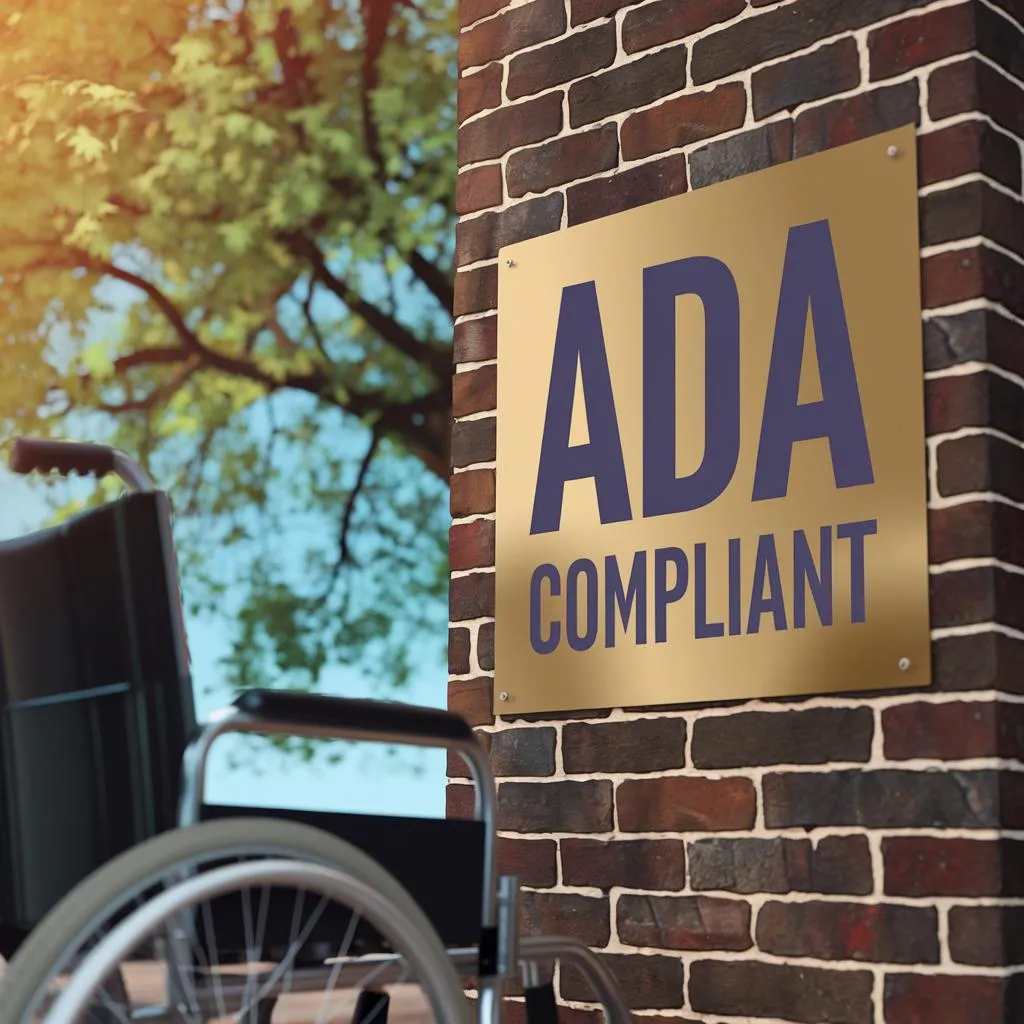ADA-compliant signs are essential for businesses aiming to accommodate everyone, including individuals with disabilities. These signs follow the standards set by the Americans with Disabilities Act (ADA), ensuring that communication within public spaces is accessible. If your business serves the public, understanding and implementing ADA requirements is critical for both compliance and customer service.
One of the primary goals of ADA signage is to aid individuals with various disabilities. This can include those who are blind or visually impaired, as well as those who may have cognitive challenges. Common features of ADA-compliant signs include:
- Tactile letters and Braille: Signs must include raised characters and Braille to provide information for individuals who cannot read standard text.
- High contrast: The text color should contrast sharply with the background to improve visibility for those with low vision.
- Specific dimensions: Signs must meet exact height and width requirements, ensuring they are easily seen and touched.
- Placement guidelines: Signs should be mounted at a specific height (typically between 48 inches and 60 inches from the floor) and be positioned where they are easy to locate.
Let’s look at some real-world scenarios to illustrate why ADA-compliant signs are so important. For instance, places like hospitals, schools, and shopping centers regularly receive visitors who may have visual impairments. A well-placed sign indicating an accessible restroom or an emergency exit can significantly enhance the experience for these individuals, ensuring they feel safe and informed.
It’s also crucial to remember that not all ADA signage needs to be the same. Depending on the type of business, different signs will be necessary. For example:
- Directional signs: These guide visitors through the building to important areas, like exits or accessible elevators.
- Identification signs: These label rooms, offices, or departments, making it easier for guests to find their destination.
- Informational signs: These provide details about services or announcements related to accommodations for people with disabilities.
For businesses, the decision to implement ADA-compliant signage is not just about meeting legal requirements. It’s also about demonstrating a commitment to inclusivity. Make sure your signage is not only compliant but also reflects the overall branding and aesthetics of your business. This can help create a welcoming environment for all customers.
However, failing to comply with ADA signage requirements can result in costly fines and a negative public image. For example, a hospital that neglects to provide adequate directional signs may face lawsuits or penalties. Besides the legal implications, lack of accessibility can deter potential customers, putting your business at a disadvantage in a competitive market.
If you’re unsure whether your business needs ADA-compliant signs, consider factors such as:
- The size of your facility: Larger buildings are more likely to require many compliant signs.
- The public accessibility of your business: If you serve the general public, ADA compliance is crucial.
- Local regulations: Some areas may have stricter requirements than the federal guidelines.
To begin the process of implementing ADA-compliant signage, you can follow these steps:
- Consult with an expert: Working with a signage specialist familiar with ADA guidelines can ensure you create effective and compliant signage.
- Evaluate your current signs: Assess your existing signage for compliance gaps. Identify areas that are lacking or need replacement.
- Plan for future growth: As your business grows, consider how to keep signage up to date. This can save costs by planning replacements in advance.
For tailored support, get in touch with a professional signage company to request a quote or consultation. Ensuring you are informed and compliant can provide peace of mind for you and a better experience for your customers.
Frequently Asked Questions
- What types of businesses must comply with ADA signage requirements? Any business that serves the public is typically required to follow ADA signage standards. This includes restaurants, retailers, schools, and medical facilities.
- Do ADA-compliant signs need to be installed in all areas of my business? While it’s essential to have signs in primary locations, you don’t have to place them everywhere. Focus on high-traffic and critical areas like entrances, exits, and restrooms.
- Are there costs involved in making signs ADA compliant? Yes, there may be costs associated with updating or creating ADA-compliant signs. However, the investment often leads to improved customer experiences and potential legal protection.


